TERMINAL POINTS ON THE UNIT CIRCLE
Subscribe to our ▶️ YouTube channel 🔴 for the latest videos, updates, and tips.
Suppose t is a real number. Let’s mark off a distance t along the unit circle, starting at the point (1, 0) and moving in a counterclockwise direction, if t is positive or in a clockwise direction, if t is negative.
In this way we arrive at a point P(x, y) on the unit circle. The point P(x, y) obtained in this way is called the terminal point determined by the real number t.
Terminal Point P(x, y) Determined by t > 0 :
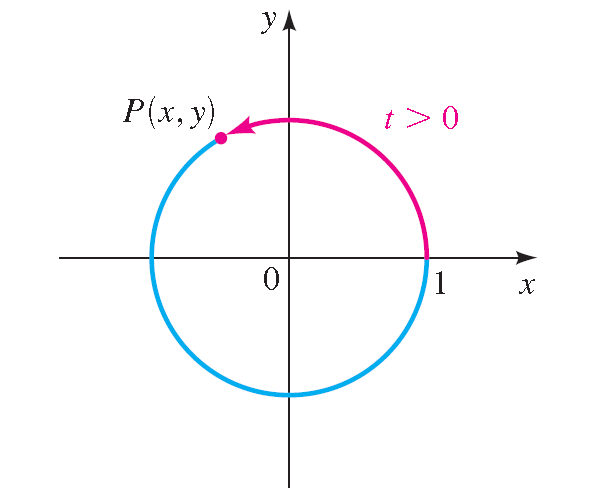
Terminal Point P(x, y) Determined by t < 0 :
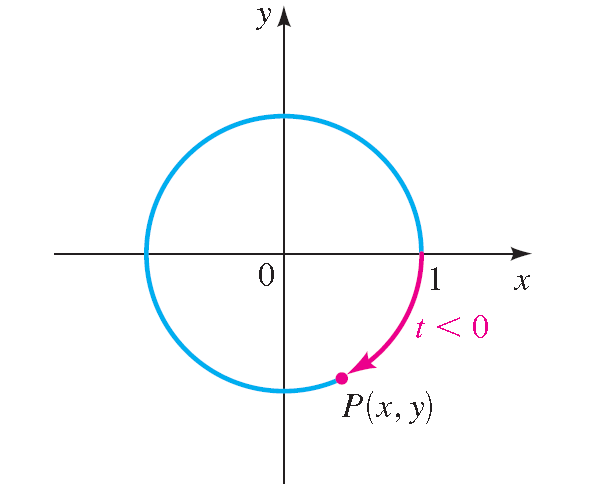
The circumference of the unit circle is
C = 2π(1) = 2π
So, if a point starts at (1, 0) and moves counter clockwise all the way around the unit circle and returns to (1, 0), it travels a distance of 2π. To move halfway around the circle, it travels a distance of (1/2)(2π) = π.
To move a quarter of the distance around the circle, it travels a distance of (1/4)(2π) = π/2. Where does the point end up when it travels these distances along the circle? In the diagram shown below, we see, for example, that when it travels a distance of π starting at (1, 0), its terminal point is (-1, 0).
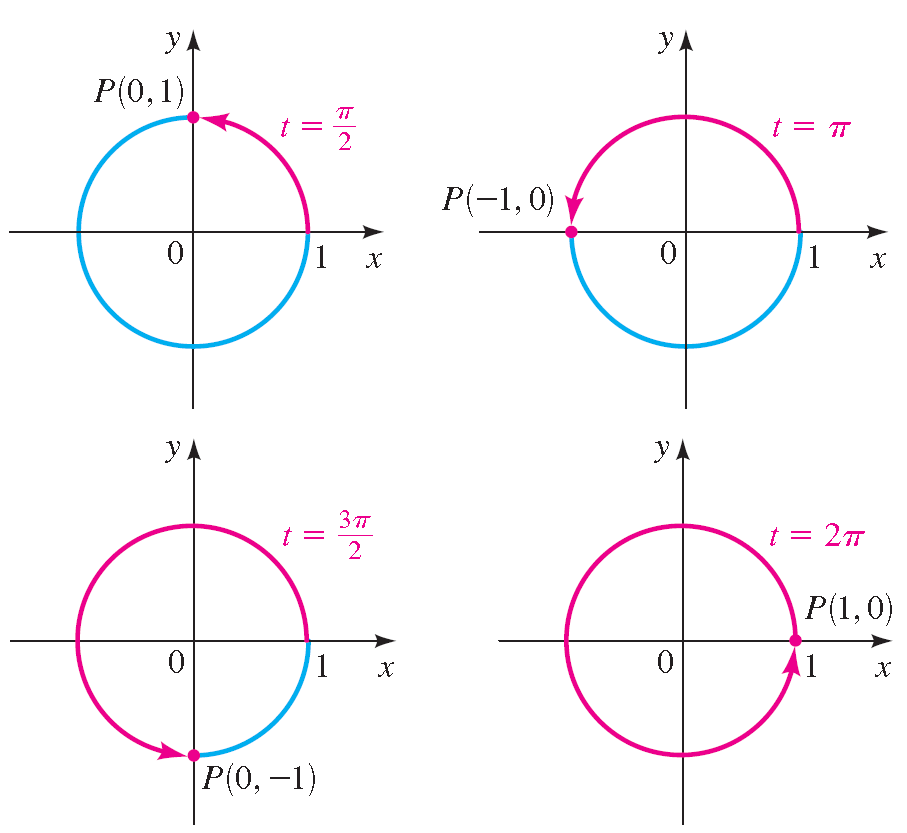
Finding Terminal Points
Find the terminal point on the unit circle determined by each real number t.
Example 1 :
t = 3π
Solution :
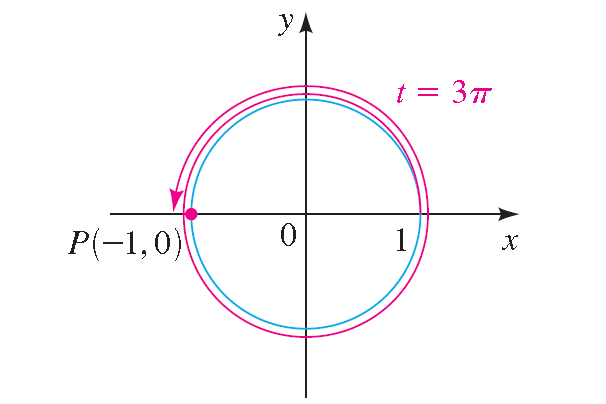
The terminal point determined by 3π is (-1, -0).
Example 2 :
t = -π
Solution :
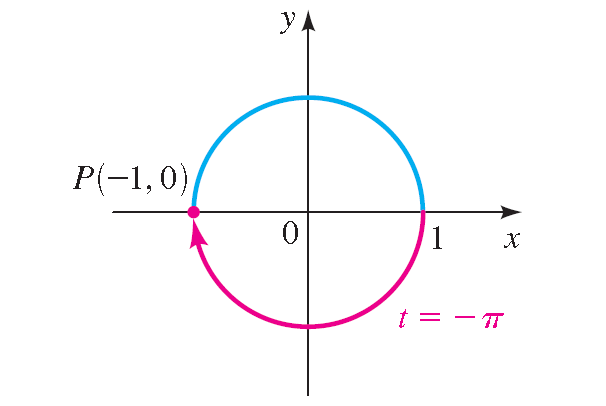
The terminal point determined by -π is (-1, -0).
Example 3 :
t = -π/2
Solution :
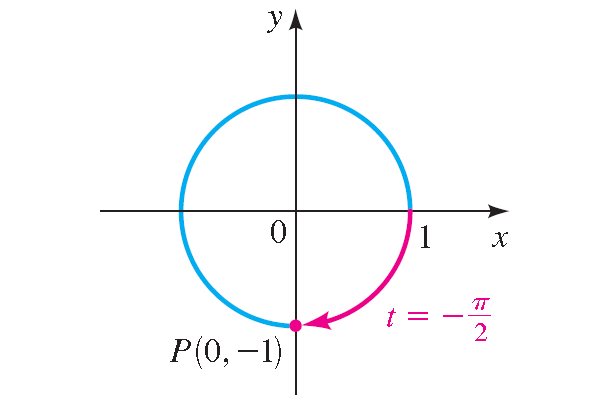
The terminal point determined by -π/2 is (0, -1).
Notice that different values of t can determine the same terminal point.
The terminal point P(x, y) determined by t = π/4 is the same distance from (1, 0) as from (0, 1) along the unit circle.
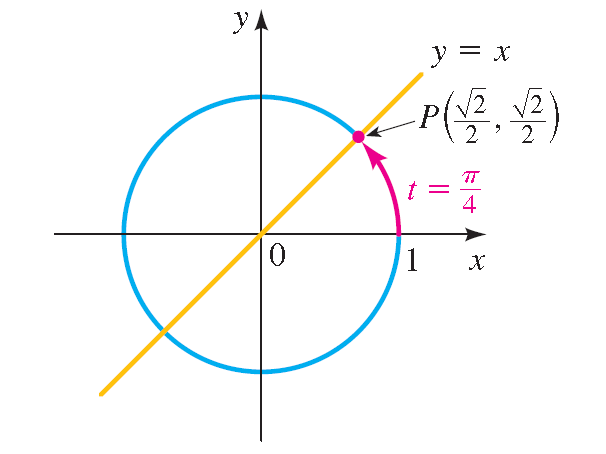
Since the unit circle is symmetric with respect to the line y = x, it follows that P lies on the line y = x. So P is the point of intersection (in the first quadrant) of the circle x2 + y2 = 1 and the line y = x.
Substituting x for y in the equation of the unit circle.
x2 + x2 = 1
2x2 = 1
x2 = 1/2
k = ± 1/√2
Because P is in the first quadrant, x = 1/√2 and y = x, we have y = 1/√2 also.
Thus the terminal point determined by π/4 is
P(1/√2, 1/√2) = P(√2/2, √2/2)
Similar methods can be used to find the terminal points determined by t = π/6 and t = π/3.
Table :
|
t 0 π/6 π/4 π/3 π/2 |
Terminal point determined by t (1, 0) (√3/2, 1/2) (√2/2, √2/2) (1/2, √3/2) (0, 1) |
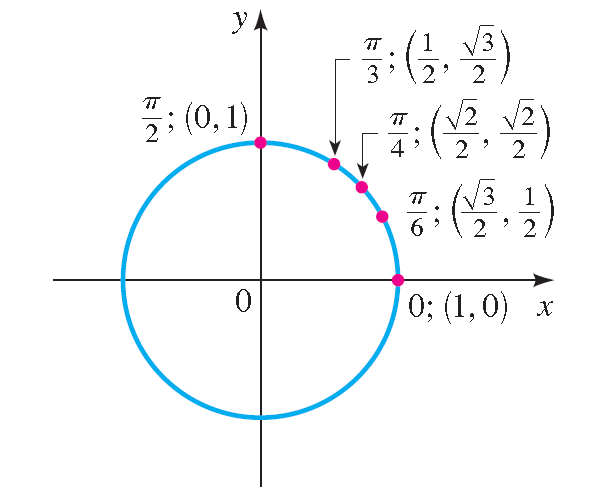
Example 4 :
t = -π/4
Solution :
Let P be the terminal point determined by -π/4, and let Q be the terminal point determined by π/4. In the diagram shown below, we see that the point P has the same coordinates as Q except for sign.
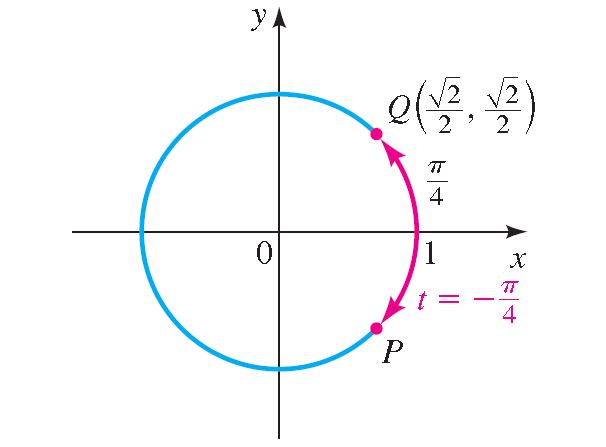
Because P is in quadrant IV, its x-coordinate is positive and its y-coordinate is negative. Thus, the terminal point is
P(√2/2, -√2/2)
Example 5 :
t = 3π/4
Solution :
Let P be the terminal point determined by 3π/4, and let Q be the terminal point determined by π/4. In the diagram shown below, we see that the point P has the same coordinates as Q except for sign.
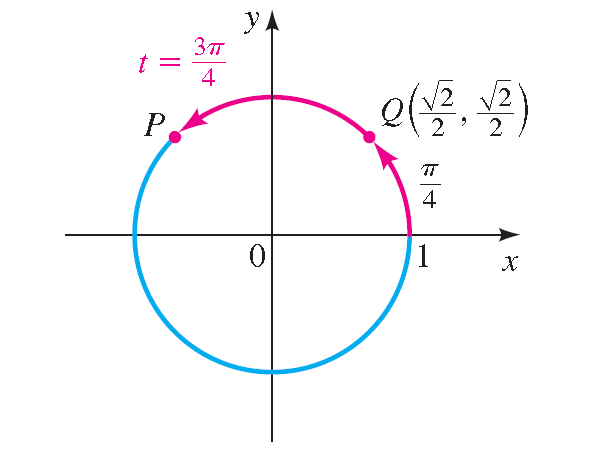
Because P is in quadrant II, its x-coordinate is negative and its y-coordinate is positive. Thus, the terminal point is
P(-√2/2, √2/2)
Example 6 :
t = -5π/6
Solution :
Let P be the terminal point determined by -5π/6, and let Q be the terminal point determined by π/6. In the diagram shown below, we see that the point P has the same coordinates as Q except for sign.
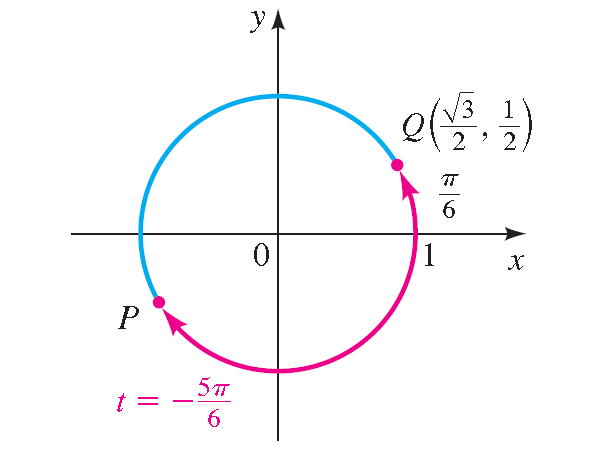
Because P is in quadrant III, its both x-coordinate and y-coordinate are negative. Thus, the terminal point is
P(-√3/2, -1/2)
Subscribe to our ▶️ YouTube channel 🔴 for the latest videos, updates, and tips.
Kindly mail your feedback to v4formath@gmail.com
We always appreciate your feedback.
©All rights reserved. onlinemath4all.com
Recent Articles
-
10 Hard SAT Math Questions (Part - 38)
Dec 08, 25 12:12 AM
10 Hard SAT Math Questions (Part - 38) -
SAT Math Practice
Dec 05, 25 04:04 AM
SAT Math Practice - Different Topics - Concept - Formulas - Example problems with step by step explanation -
10 Hard SAT Math Questions (Part - 37)
Dec 03, 25 07:02 AM
10 Hard SAT Math Questions (Part - 37)


